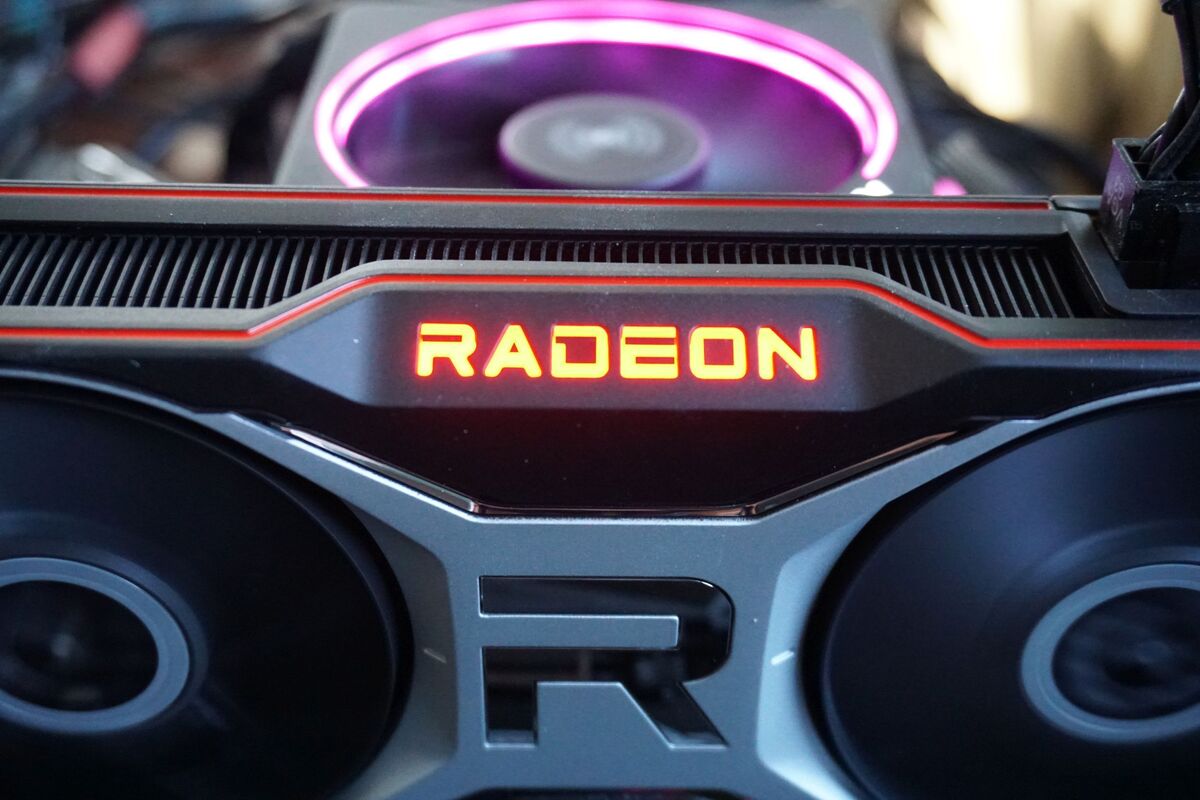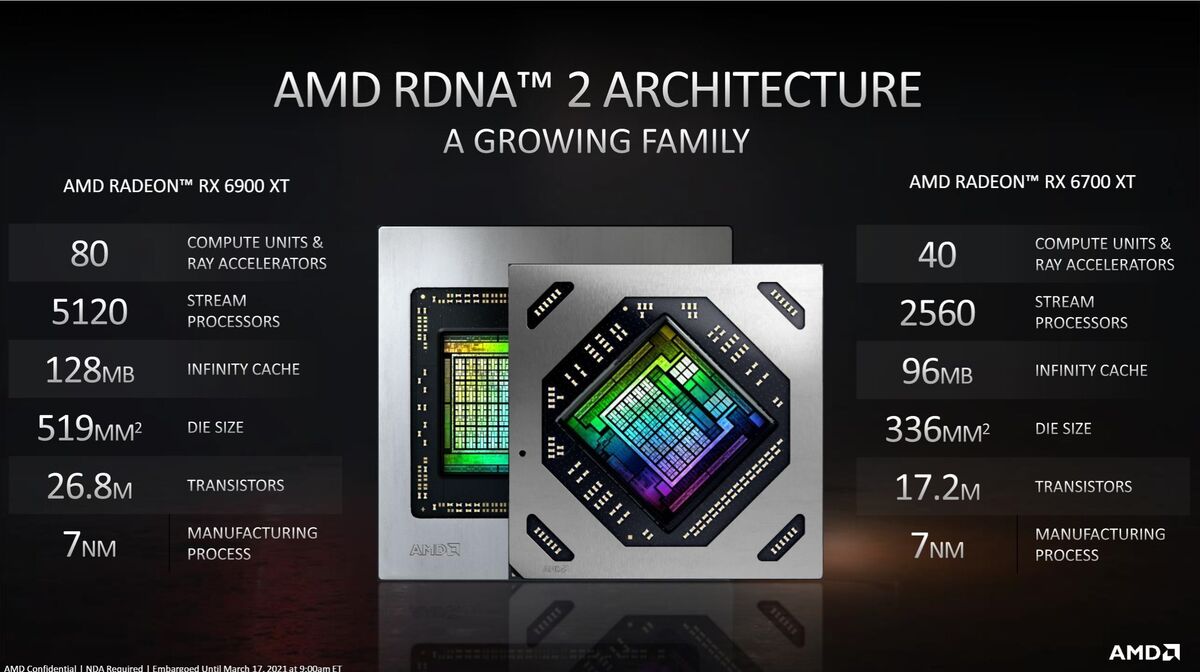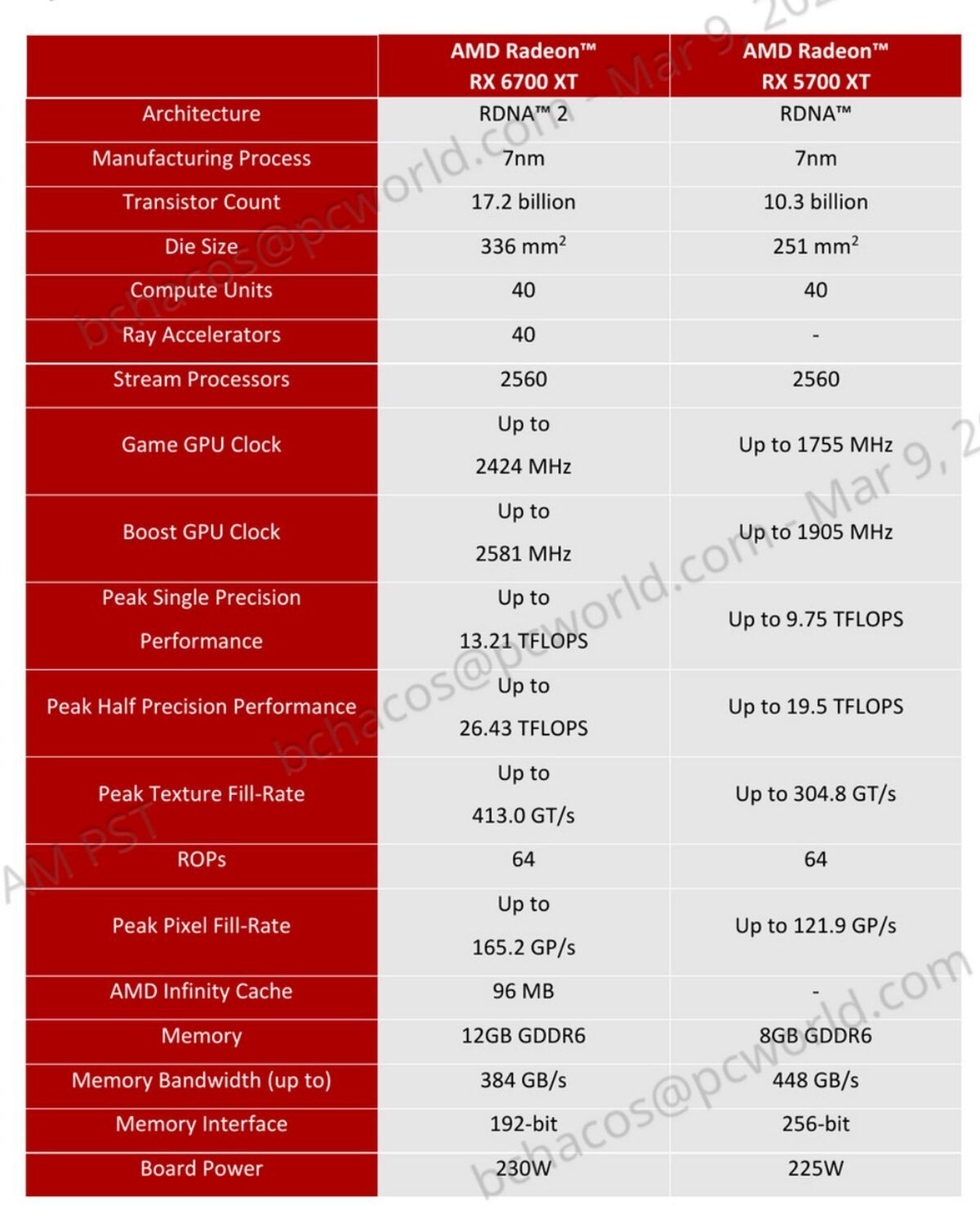And you’ll probably still wind up paying even more for it.
The AMD Radeon RX 6700 XT hits shelves on March 18—and so we’ve put it to the test for you all. In this video, Alaina gives a quick rundown of the top 5 things you should know about this mid-tier card’s performance, price, and value.
Today’s Best Tech Deals
Picked by PCWorld’s Editors
Top Deals On Great Products
Picked by Techconnect’s Editors
Show More
“There are no bad products, only bad prices.” That well-worn adage, attributed to Anandtech founder Anand Shimpi, kept popping into my head as I reviewed AMD’s Radeon RX 6700 XT. This is a barn-burning graphics card for 1440p and 1080p gaming, but at $479 the price is far too high—at least in theory.
In reality, graphics cards have been almost impossible to find thanks to a crushing mixture of supply shortages, insane demand for all gaming hardware, logistics woes, tariffs, and the mania swirling around the booming Ethereum cryptocurrency. Newly stocked graphics cards sell out instantly at proper retailers and go for hundreds of dollars over MSRP at resale sites like Ebay and Craigslist. Even used two- and three-generation-old GPUs are being scooped for more than their launch prices new many, many years ago. Things are so bad that Nvidia recently revived the ancient GTX 1050 Ti—an entry-level graphics card that first launched in 2016.
All those extra profits go to retailers, scalpers, and AMD board partners like MSI and Sapphire though, rather than AMD itself. Pricing the Radeon RX 6700 XT at $479 allows the company to get in on the action, and the card will no doubt sell for more than this on the streets anyway. Because AMD is suffering through a manufacturing logjam at chip foundry TSMC—the Xbox Series X, PlayStation 5, Ryzen 5000 desktop and mobile processors, and Radeon RX 6000-series are all built on TSMC’s 7nm process—being able to sell its GPUs for more gives the company additional incentive to churn out graphics cards during a time when there’s nowhere near enough graphics cards available to satisfy gamers.
 Brad Chacos/IDG
Brad Chacos/IDGThat’s a good thing. The bad news? The $479 Radeon RX 6700 XT performs closer to the $400 GeForce RTX 3060 Ti than the $500 RTX 3070 (though AMD’s Smart Access Memory can provide a massive boost in some games) and it isn’t anywhere near as strong as Nvidia’s cards when it comes to ray tracing. When the dust settles around the current graphics card shortage the price would need to drop at least $100 to be truly compelling. (It’s worth noting that its Radeon RX 5700 XT predecessor debuted at $400.) If you can find the Radeon RX 6700 XT for MSRP it might be worth considering in today’s ludicrous market, however, especially if you need to upgrade now and don’t want to simply stream your games via Nvidia’s PC-friendly GeForce Now service until everything calms down.
Now that the stage has been set, let’s dive into AMD’s $479 Radeon RX 6700 XT reference card, which will periodically be available at no markup on AMD.com. Custom cards from AMD partners like Sapphire, XFX, Asus, and MSI also hit the streets today but cost much more. We’ll have reviews of custom RX 6700 XTs coming soon.
If you want a high-level look at our impressions before wading through pages of explanatory text and benchmark graphs, be sure to check out our companion synopsis, 5 key things you need to know about the Radeon RX 6700 XT.
Radeon RX 6700 XT specs, features, and price
The previously launched Radeon RX 6800-series and Radeon RX 6900 XT were built using “Big Navi,” the largest GPU built on AMD’s fantastic new RDNA 2 architecture. The Radeon RX 6700 XT’s “Navi 22” chip is much smaller, featuring half as many compute units and stream processors as its bigger sibling. Here’s how they compare:
 AMD
AMDMeanwhile, with 40 compute units, this new GPU is a direct replacement for the Radeon RX 5700 XT, which served as the flagship for AMD’s first-gen RDNA architecture. Seeing how it holds up in our performance benchmarks will be insightful. For now, here’s how the Radeon RX 6700 XT’s tech specs hold up against the Radeon RX 5700 XT’s:
 AMD
AMDHot damn, this GPU is fast. The Radeon RX 6700 XT features a ludicrous Game Clock—AMD’s term for expected speeds while gaming—of 2,424MHz, roughly 700MHz faster than its predecessor, and the card actually hit those speeds on our testbed. That helps the graphics card perform over 30 percent faster than the RX 5700 XT in some games, as you’ll see later.
Check out that die size, though. The Radeon RX 6700 XT’s GPU is substantially larger than the Radeon RX 5700 XT’s. AMD beefed up RDNA 2 with all sorts of advanced new features, most notably ray accelerators and the innovative Infinity Cache. We’ll cover them briefly below, but our RDNA 2 architecture deep dive goes into fair greater detail.
Each RDNA 2 compute unit includes a single ray accelerator that helps process real-time ray tracing workloads, which allows the cutting-edge lighting effects to run on AMD GPUs for the first time. Crucially, however, AMD doesn’t currently offer a rival feature to Nvidia’s DLSS, which uses dedicated hardware and machine learning to improve performance and claw back many of the frames lost to ray tracing’s significant performance hit. AMD is working on a more open alternative dubbed “Fidelity FX Super Resolution” but it isn’t available yet, nor has it even been explained in detail. The lack of a DLSS alternative mostly limits Radeon RX 6000-series GPUs to 1080p resolution with ray tracing enabled—a bummer when the Radeon RX 6700 XT costs nearly $500 and targets 1440p gaming.
 AMD
AMDSpeaking of 1440p gaming, AMD outfitted the Radeon RX 6700 XT with an ample 12GB of GDDR6 memory over a tiny 192-bit bus. That should be plenty of overhead for the foreseeable future, and AMD’s VRAM generosity forced Nvidia follow its lead with the (also overpriced) RTX 3060. AMD gets by with such a constrained bus because of RDNA 2’s radical Infinity Cache. The Infinity Cache provides a large amount of on-die L3 cache that’s been heavily optimized for gaming workloads, which lets the Radeon RX 6700 XT keep most of the working data for any given frame on-die. This avoids the need to send signals all the way across the chip package to the onboard memory in many cases, especially because the cache holds a lot of temporal and spatial data that can be reused in subsequent frames. AMD claims the Radeon RX 6700 XT’s memory setup delivers up to 2.5X the performance of a standard VRAM configuration with a wider 256-bit bus. Remarkable stuff indeed.
The Radeon RX 6700 XT ships with 96MB of Infinity Cache. That’s smaller than the 128MB found in pricier AMD GPUs, but the Radeon RX 6800-series and 6900 XT target 4K gaming. Product manager Nish Neelalojanan told press that the “hit rate” for the RX 6700 XT’s Infinity Cache at 1440p is similar to what the faster GPUs see at 4K resolution.
 Brad Chacos/IDG
Brad Chacos/IDGNvidia recently made waves by introducing a mining limiter to the RTX 3060 (though the company regrettably has since shipped drivers that disable it). AMD says it has no plan to limit mining performance via software tricks, but the Infinity Cache setup makes the Radeon RX 6700 XT inherently less appealing for Ethereum mining. The Ethereum dataset is bigger than 4GB, so it won’t fit onto the ultra-fast Infinity Cache, and mining the cryptocurrency is most efficient on graphics cards with more memory bandwidth. Since AMD went with a meager 192-bit memory bus thanks to the Infinity Cache’s capabilities, the Radeon RX 6700 XT should be much slower at mining than Nvidia alternatives. Early leaks say it falls behind even the RX 5700 XT for Ethereum mining. Good!
The Radeon RX 6700 XT also supports AMD’s killer Smart Access Memory feature, which can provide higher frame rates in some scenarios when you pair the graphics card with a compatible CPU and motherboard. AMD seems to be foisting a big part of the RX 6700 XT’s value proposition on this still-limited feature. We tested our entire games suite a second time with Smart Access Memory active and will devote an entire section to its performance later, after our standard benchmarks.
 Brad Chacos/IDG
Brad Chacos/IDGDesign-wise, the Radeon RX 6700 XT reflects AMD’s newfound aesthetic and functionality for reference cards. This generation, the company switched away from its notorious blower-style reference cooler for a more common axial fan design that runs much cooler and quieter. It’s a big improvement, especially for traditional single-GPU gaming rigs. The reference card should have no problem fitting into almost any system thanks to its dual-slot design and standard length. Its look largely matches the Radeon RX 6800-series’s vibe, with an attractive silver-and-black metal aesthetic and illuminated ‘Radeon’ logo on the edge.
 Brad Chacos/IDG
Brad Chacos/IDGIt’s not an exact twin, though. The Radeon RX 6700 XT reference card includes two axial fans in its shroud, replacing the third with a big ‘R’ logo, and it only requires an 8-pin and a 6-pin power connector rather than dual 8-pins like Big Navi cards. Notably, despite the sky-high clock speeds and fancy new RDNA 2 features, the Radeon RX 6700 XT requires just 230 watts of power, a mere 5 watts more than last-gen’s 5700 XT. AMD is justifiably proud of the power efficiency improvements in RDNA 2.
 Brad Chacos/IDG
Brad Chacos/IDGThe port report for the Radeon RX 6700 XT
AMD’s Radeon RX 6700 XT comes with an HDMI 2.1 port and a trio of DisplayPorts. Like other RX 6000-series GPUs, it supports all of RDNA 2’s various features, including AV1 video decoding, DirectX 12 Ultimate features, an improved version of Radeon Boost that wraps in Variable Rate Shading, Radeon Anti-Lag across all major DX APIs, FreeSync display support, AMD Link streaming to other devices, and much more. It does not support Rage Mode, however—a one-click setting that jacks up the power limit and fan speed on the Radeon RX 6800 XT and 6900 XT. The robust Radeon Settings app includes both manual and automatic performance tuning controls so you can perform those tweaks on your own though.
But enough chit-chat and existential woe. Let’s get benchmarking.
Next page: Our test system, benchmarks begin
AMD’s Radeon RX 6700 XT graphics card is a good graphics card for 1440p and 1080p gaming. It doesn’t handle ray tracing well, however, and comes with a too-high price that makes a lot of business sense in today’s environment.
Pros
- Great 1440p and 1080p gaming performance
- 12GB of memory bolstered by Infinity Cache
- Smart Access Memory unlocks higher performance when paired with Ryzen 5000
- Cool, quiet, and attractive cooler design
- Should fit in most systems due to standard dimensions
Cons
- Price is too high versus GeForce rivals
- Poor ray tracing performance
- No answer to Nvidia’s DLSS

